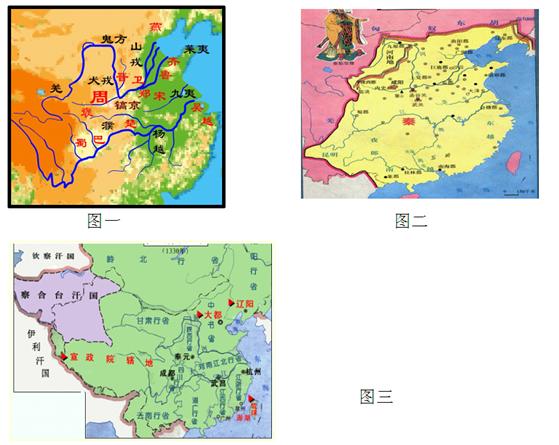地方行政制度的变化是我国古代政治制度演变的重要组成部分。根据下面三幅地图并结合所学知识回答下列问题:(19分)

(1)图A—1、A—2、A—3分别反映了我国古代哪一朝代的何种地方行政制度?(3分)
(2)图A—1反映的地方行政制度在西周和春秋时期各产生了什么影响?其历史影响为什么会前后不同?(6分)
(3)图A—2与图A—1反映的地方行政制度的主要差别是什么?(3分)
(4)简述图A—3反映的地方行政制度的内容,分析其作用和影响。(7分)
(1)图A—1:西周分封制;图A—2:秦朝郡县制;图A—3:元朝行省制度。(3分)
(2)影响:西周时期,分封制巩固周朝统治,扩大周朝疆域,推动奴隶社会走向强盛。春秋时期,分封制的影响则表现为诸侯国不再尊重周王,出现了诸侯间相互间争夺和混战。(2分)影响不同的原因:西周时期,分封制刚刚实施,周王有较大权威,各地诸侯多数与周王有密切的血缘关系,故分封制能够起到保卫王室的作用。西周后期,周王室势力下降,各地诸侯则势力增强,诸侯与周王 间的血缘关系已经疏远,周王失去对诸侯的约束作用,故分封制直接导致了诸侯争霸割据的混战局面。(4分)
(3)形成了中央垂直管理地方的形式。郡县长官一概由皇帝任免调动,不得世袭。是官僚政治取代贵族政治的重要标志。一是宣政院管辖的西藏和四川、青海部分地区。行省成为最高地方行政区的名称,行使权力时受中央节制。(3分)作用和影响:行省的设置,便利了中央对地方的管理,从政治上巩固了国家的统一,使中央集权在行政体制上得到了保证。这是我国政治制度史上的一项重大变革,对后世有巨大的影响。明清沿用并改造了行省制度,一直发展到今天。(4分)

 假如你叫李华,你的美国笔友Mike即将随父母到中国,并在中国过中秋节。他来信向你询问有关中秋节的习俗,请你回信告诉他。要点如下:
假如你叫李华,你的美国笔友Mike即将随父母到中国,并在中国过中秋节。他来信向你询问有关中秋节的习俗,请你回信告诉他。要点如下: